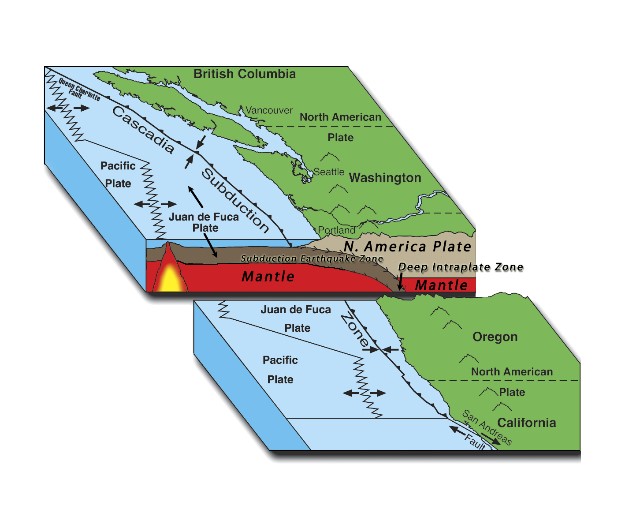Summary | Excerpt | Reading Guide | Reviews | Beyond the Book | Read-Alikes | Genres & Themes | Author Bio

A Novel
by Emma PatteeThis article relates to Tilt
 Emma Pattee's debut novel Tilt follows one woman's journey across Portland after the city is hit by a devastating earthquake. Though fictional, the disaster is based on research that suggests such an event could take place in the not-so-distant future. Readers may recognize this future earthquake as "The Big One" from Kathryn Schulz's panic-inducing 2015 New Yorker article.
Emma Pattee's debut novel Tilt follows one woman's journey across Portland after the city is hit by a devastating earthquake. Though fictional, the disaster is based on research that suggests such an event could take place in the not-so-distant future. Readers may recognize this future earthquake as "The Big One" from Kathryn Schulz's panic-inducing 2015 New Yorker article.
Portland sits on or near several fault lines, where seismic activity beneath the earth can trigger earthquakes. The most significant of these is the Cascadia Subduction Zone, a 700-mile fault off the Pacific coast that stretches from northern California to British Columbia. Here, two tectonic plates meet, with the Juan de Fuca Plate gradually shifting beneath the North American Plate. This causes an immense buildup of pressure that will eventually be released as the plates shift.
By analyzing marine and land sediments, scientists have concluded that the Cascadia Subduction Zone has produced a series of major seismic events throughout history, approximately 350 years apart. The last of these was in 1700, when an estimated 9.0 magnitude earthquake caused the coastline to drop by several feet and triggered a tsunami that brought further devastation. Current data puts the likelihood of another of these so-called megathrust events taking place within the next 50 years at 37%. But experts, such as Yumei Wang, a geotechnical engineer, and Chris Goldfinger, a Cascadia earthquake specialist, are keen to emphasize that a large-scale earthquake will happen. "This is an earthquake that will definitely occur. It's like death and taxes—it's gonna happen. We just don't know when," Wang has said.
One of the key reasons why the predicted event would be so devastating is that current infrastructure is not built to withstand it. A 2007 study by the state Department of Geology and Mineral Industries (DOGAMI) found that more than 1,000 schools in Oregon were at a "high or very high risk" of collapsing should an earthquake hit. This is due to the use of bricks, which struggle to withstand the sideways shaking caused by quakes. With a megathrust earthquake causing an initial five to seven minutes of continuous shaking, several aftershocks, and a tsunami, such buildings would stand little to no chance of survival.
These findings helped trigger new legislation, which culminated in the country's first state-funded seismic rehabilitation grant, launched in 2009. This money is used to retroactively reinforce schools and other public buildings in Oregon, fortifying them against earthquakes. While progress has been made, much of Portland and wider Oregon remain at risk. A separate study by DOGAMI in 2018 estimated that a Cascadia earthquake would cause 27,000 injuries in the Portland area, ranging from minor to fatal. 85,000 people would be displaced and in need of emergency shelter, and damage to infrastructure would total $37 billion. A 2021 study, meanwhile, estimated that the resulting tsunami would cause more than 18,000 additional fatalities in Oregon's coastal counties alone.
Despite efforts to better prepare the area, government estimates anticipate that, as things stand, the devastation caused by a Cascadia earthquake would leave Oregon cut off from all services and assistance for at least two weeks. Individuals, businesses, and schools are encouraged to take precautionary measures and stay prepared, should the inevitable quake hit sooner rather than later.
Graphic courtesy of Oregon.gov
Filed under Nature and the Environment
![]() This article relates to Tilt.
It first ran in the April 9, 2025
issue of BookBrowse Recommends.
This article relates to Tilt.
It first ran in the April 9, 2025
issue of BookBrowse Recommends.
Your guide toexceptional books
BookBrowse seeks out and recommends the best in contemporary fiction and nonfiction—books that not only engage and entertain but also deepen our understanding of ourselves and the world around us.